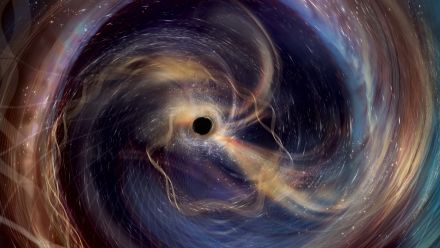Scientists from The ôÕѿǨû§AV National University (ANU) have generated by the vibrations of traffic along the Federal Highway to learn more about the seismic nature of Lake George, situated north-east of Canberra.
According to the researchers, the study provides ãunprecedentedã insights into the structural characteristics of the Lake George fault zone, which runs along the western boundary of the lake.
They say the fault holds clues about past earthquakes in the area.
The research team found Lake George displays seismic characteristics similar to several major active fault systems worldwide, including the notorious San Andreas Fault in California.
ãEarthquake faults can pose serious risks, especially in areas where people live and build. To understand how dangerous a fault might be, scientists need detailed maps of what lies underground,ã study lead author Dr Chengxin Jiang said.
ãHowever, such maps are challenging to make, particularly in urban settings, as it requires effective and non-invasive and environmentally friendly techniques.ã
Using a network of 100 beer can-sized seismometers placed in the then-dry lakebed and near the highway, the researchers analysed traffic vibrations and used that data to create 3D images, allowing them to peer 800 meters beneath Earthãs surface ã similar to doing a CT scan to create detailed medical images of the human body.
ãBy cross-listening to the data captured by the seismometers, weãve created the first detailed picture of the lakeãs fault zone, allowing us to better study its structure and seismic characteristics,ã Dr Jiang said.
ãThe Lake George fault zone, which stretches about 80 kilometres, is one of three major fault systems near Canberra and is considered still active today.
ãThe Geoscience Australia earthquake catalogue contains about 50 earthquakes ranging in magnitudes from 1 to 3.5 within about 5 kilometres of this fault in the last 60 years.
ãWe also know that Lake George has potentially experienced many 7-magnitude earthquakes in the past 4 to 5 million years. This history of earthquakes in the region is what could have shaped the lakeãs topography, including the hills to the west of the lake that we can see today.ã
According to study co-author Professor Meghan Miller, traditional methods to study fault zones are difficult and can be very expensive, often requiring artificial explosions.
She said the imaging technique of analysing ordinary traffic noise to study fault zones offers an innovative, powerful and non-invasive solution that can be used to conduct seismic hazard assessments in major metropolitan areas or regions that are difficult to access.
ãThis technique has allowed us to study the structure and characteristics of a fault zone in never-before-seen detail,ã she said.
ãThe findings provide us with insight into the size of the earthquakes that occurred in the geologic past on the Lake George fault, and we can compare that fault to other regions that are seismically active today.ã
According to Professor Miller, the compact nature of the small, portable seismometers means they can be installed in the ground very quickly and can be deployed anywhere, offering an easy and convenient option for scientists to better study fault zones in different regions of the world.
ãThis technique could even be used to explore underground resources ã all without disturbing the ground,ã she said.
The researchers collected data from the signals generated by passing traffic along the Federal Highway for about four weeks, from December 2020 to January 2021.
The research is published in the journal .


